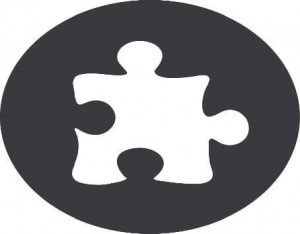
What do we mean by self-harm?
Self-harm is when someone purposefully damages or causes injuries to their body in some way. It’s usually a way of coping with or expressing overwhelming emotional pain. The phrase ‘self-harm’ is used as an ‘umbrella’ term to describe a varied range of behaviours which might include;
- Cutting, scratching, picking or burning skin
- punching or hitting walls, doors or themselves
- poisoning with tablets or toxic chemicals
- misusing alcohol or drugs
- deliberately starving such as Anorexia (anorexia nervosa) or Bulimia (bulimia nervosa)binge eating or having Diabulimia (Type 1 diabetes and bulimia)
- excessively exercising
Self-harm is often connected by a physical response linked to an emotional pain of some kind, and which can lead to being very addictive. With this in mind it can be more helpful to concentrate and focus on how someone is feeling rather than what their chosen act of self-harm is. It is unsurprising to learn then, that self-harm often occurs during times of anger, distress, fear, worry, depression or low self-esteem in order to manage or control their negative feelings. Self-harm can also be used as a form of self-punishment for something someone has done, thinks they have done, are told by someone else that they have done, or that they have allowed to be done to themselves.
We know now that if our actions result in anything that causes us to inflict damage to our body no matter how minor that might be in order to soothe emotional pain, this can be classified as self-harm.
Lots of people try to keep self-harm a secret because of feelings of shame or fear of being found out. For example, if they’re cutting themselves, they may cover up their skin and avoid discussing the problem. There are some areas on the body that may be easier to hide from those close to us. It’s often up to close family and friends to notice when somebody is self-harming, and to approach the subject with care and understanding. The important thing now is not to focus too much on the labelling, but to recognise when help is needed and find some support as soon as possible.
What signs might there be that indicates someone you know may be self-harming?
- unexplained cuts, scratches, bruises or cigarette burns, usually on their wrists, arms, thighs and chest
- keeping themselves fully covered with long sleeves etc. at all times, even in hot weather
- signs of depression, such as low mood, tearfulness or a lack of motivation or interest in anything
- self-loathing and expressing a wish to punish themselves
- not wanting to go on and wishing to end it all
- becoming very withdrawn and not speaking to others
- changes in eating habits or being secretive about eating, and any unusual weight loss or weight gain
- signs of low self-esteem, such as blaming themselves for any problems or thinking they’re not good enough for something
- signs they have been pulling out their hair
- signs of alcohol or drugs misuse
Self-harm is linked to anxiety and depression.
Some people who self-harm may be at a higher risk of suicide, however, many people who self-harm don’t want to end their lives. In fact, the self-harm may help them cope with emotional distress, so they don’t feel the need to kill themselves. That said there may be a higher risk of accidental suicide.
What’s next?
It’s important for anyone who has self-harmed to make an appointment to see their GP.
If the injuries are serious enough or you have swallowed something toxic you will need to go straight to A&E, for example;
- you or somebody else have taken an overdose of drugs, alcohol or prescription medication
- somebody is unconscious
- you or somebody else are in a lot of pain
- you or somebody else are having difficulty breathing
- you or somebody else are losing a lot of blood from a cut or wound
- you or somebody else are in shock after a serious cut or burn
Your GP will complete an assessment to see if you have an underlying condition such as depression, anxiety or borderline personality disorder. If the way you self-harm follows a particular pattern of behaviour, such as an eating disorder, you may be asked questions about this.
During your assessment and treatment, there are a number of different healthcare professionals you may see, such as:
- a counsellor – somebody who is trained in talking therapies
- a psychiatrist – a qualified medical doctor with further training in treating mental health conditions
- a psychologist – a health professional who specialises in the assessment and treatment of mental health conditions by talking (usually CBT)
You may also see some other specialists, depending on the underlying reasons why you self-harm. For example, if you’ve lost a close relative, you may be referred to a specialist bereavement counsellor for help coping with bereavement. If you’re self-harming after an incident of rape, or physical or mental abuse, you may be referred to someone who is trained in dealing with victims of sexual assault or domestic abuse.
If you have another condition that’s linked to your self-harming, such as anorexia nervosa or bulimia, you may be referred to a specialist in eating disorders and a dietitian or nutritionist.
watch video below on self-harm and self-care
Resources
Health and Wellbeing Centre – 01226 216 233
Samaritans – 116 123
Rotherham & Barnsley MIND – 01226 211 188
Arcadia House
72 Market Street
Barnsley
S70 1SN
Last updated: 22nd May 2023

